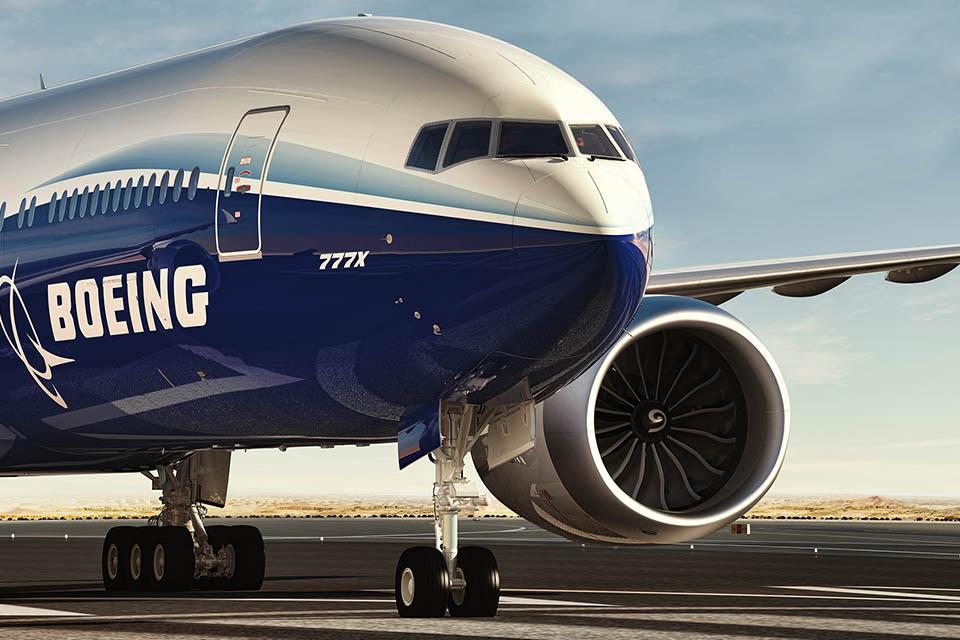
Late last week, white smoke—the tell-tale sign of a big engine being fired up on wing for the first time—curled up from a Boeing 777-9 on the ramp at the company’s Everett, Washington, facility.
What makes this normally routine event significant is the smoke came from the General Electric GE9X engines attached to “X-ray Yankee”— the third aircraft in Boeing’s 777X test fleet. Mothballed since summer 2022, Boeing has spent February re-activating the big twin. Lighting up a pair of newly installed engines represents a major milestone toward returning it to flight.
But from a bigger picture perspective, is the revival of the 777-9, also known as WH003, a much-needed sign of new progress for the delayed program? The answer is almost certainly yes. Held up by the FAA’s unwillingness in 2021 to issue type inspection authorization (TIA), the clock is ticking for the 777X if it has any hope of meeting the company’s revised 2025 delivery target.
Added to headwinds created by the global pandemic, on-going debates with the European Union Aviation Safety Agency (EASA) over potential common mode failures in the 777X flight control system, as well as more recent engine issues, WH003’s resurrection is a strong indication that an agreement on the aircraft’s elusive certification basis may finally be in sight.
There are other clues too. The second 777-9 test aircraft, WH002, was also recently reactivated and rejoined the flight program in February. The aircraft joined WH001, the first development 777-9, which itself resumed flying in late December 2022 following the detection of an engine component problem by GE during ground tests in October.
TIA, when approved, will mark the start of certification testing with FAA pilots onboard and is only issued when the agency’s examination of the data required for type certification is completed or has reached a point where it appears that the aircraft will meet the applicable regulations. Preparing for TIA sometime in the next few months is not unreasonable given the FAA’s own statements back in 2021 that the aircraft’s amended type certificate was not likely to be awarded until mid-to-late 2023 at the earliest. Realizing the hurdles to be overcome, Boeing in 2022 itself slid the initial delivery target back to mid-2025.
But perhaps the biggest sign behind Boeing’s growing confidence in ramping up the test fleet is recent indications of a compromise being reached with EASA over the flight control system redundancy issue. In a late January interview with Reuters, EASA executive director Patrick Ky, said that Boeing and the European agency “are hopefully converging” on a way forward. What is involved in the compromise remains unclear, but the language appears to be increasingly positive on both sides of the Atlantic.
Although FAA TIA is not dependent on EASA approval of the certification basis, in realistic terms the program needs international compliance across the board to progress. A satisfactory agreement with EASA would also pave the way toward a return to the standard bilateral convention between the U.S. and Europe under which each regulator approves the validating authority’s (VA) system without any technical involvement or approval by the VA.
Beyond the test and certification aspects, Boeing must also consider the timing of when to restart 777-9 production. This was paused early in 2022 to focus on assembly of in-demand 777F freighters and to prevent the buildup of additional 777-9 inventory. Now, with the possibility of certification tests in the offing and, with it, a firmer configuration, new production could likely begin later in 2023—albeit it at a very slow rate—to support the delivery ramp in 2025.
As the recent Air India order for 10 777-9s appears to show, the appetite for very large widebodies continues to grow, but to meet that demand from 2025 onward Boeing’s 777X program faces a pivotal 2023.
